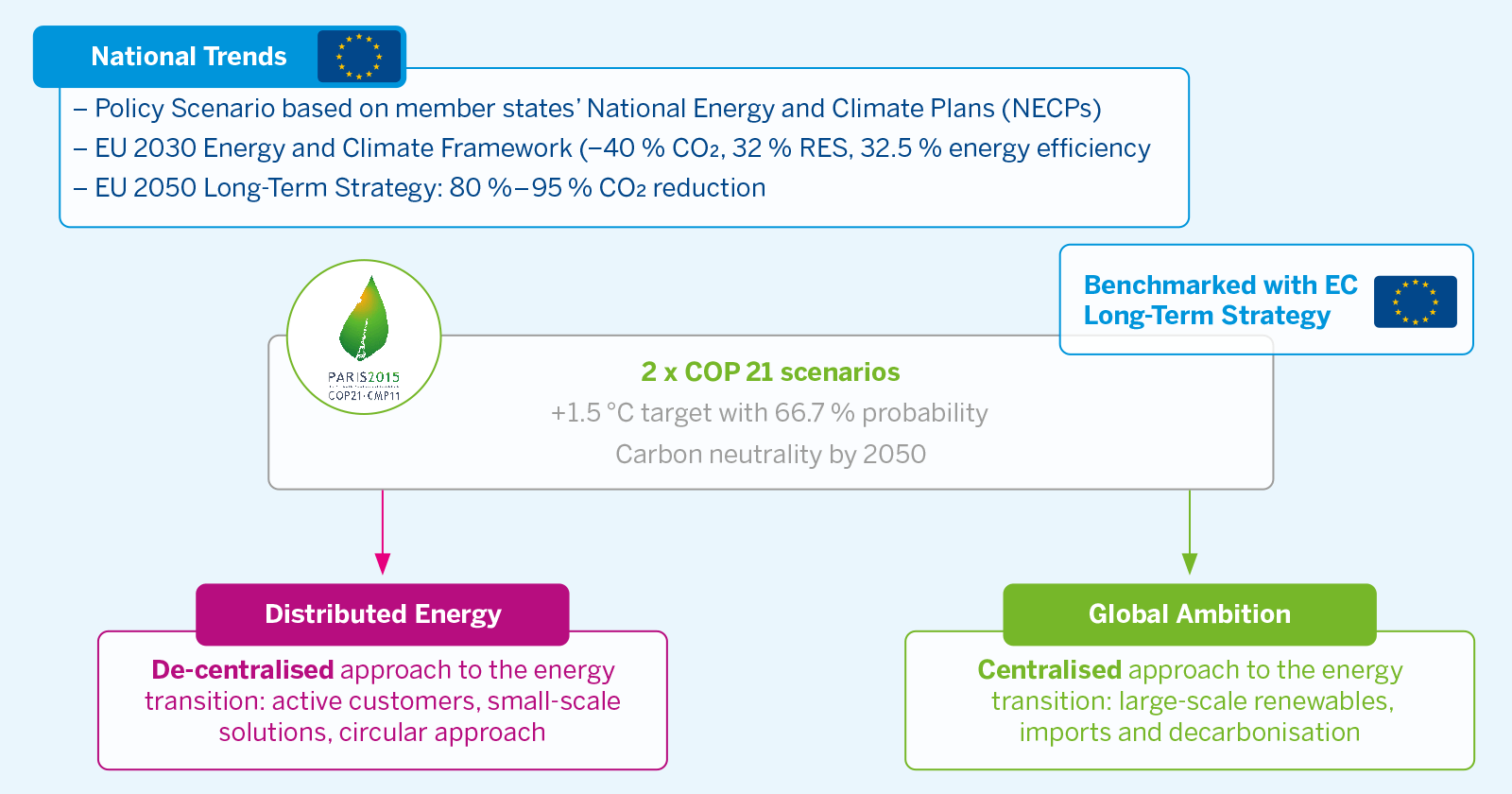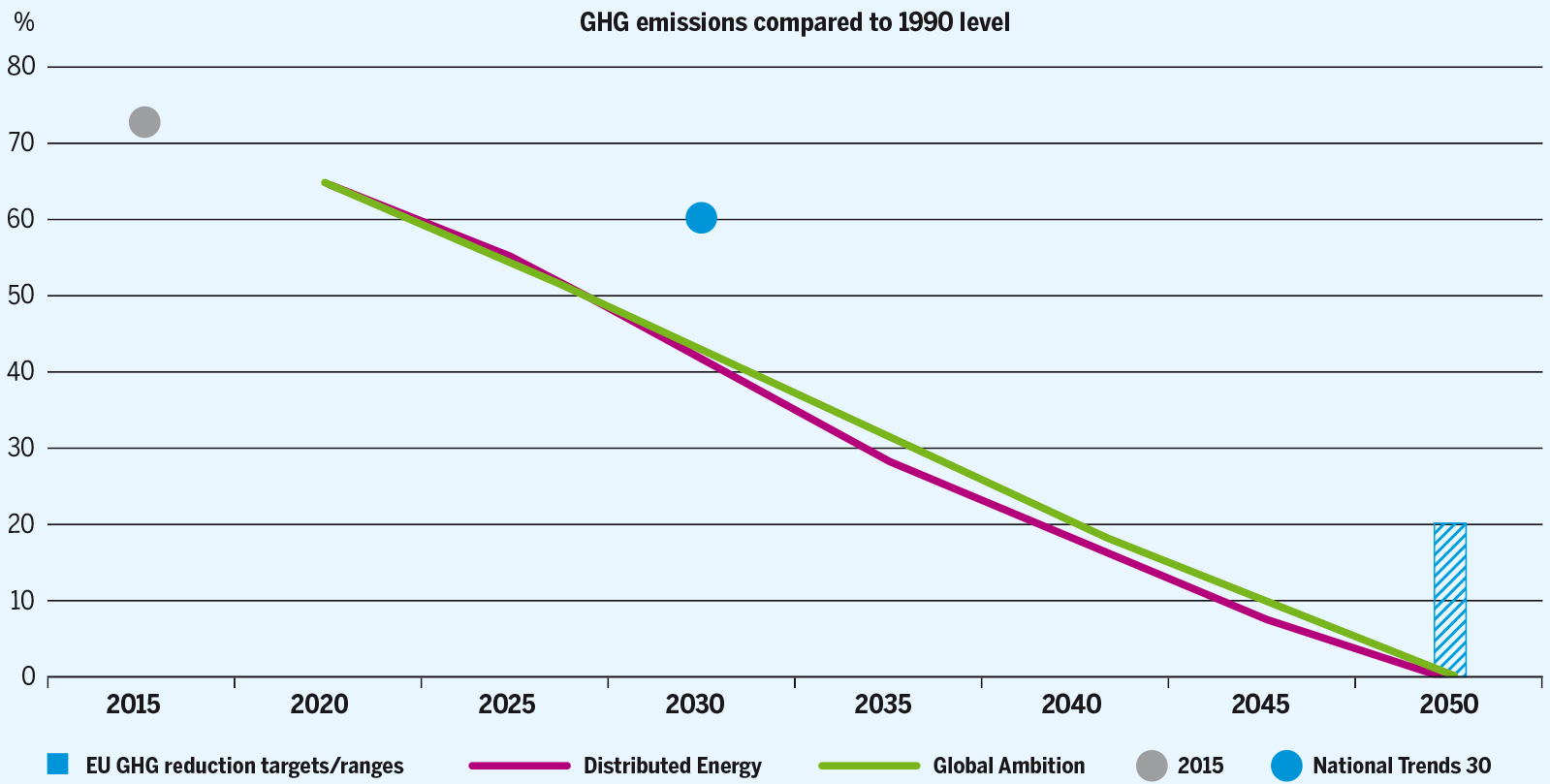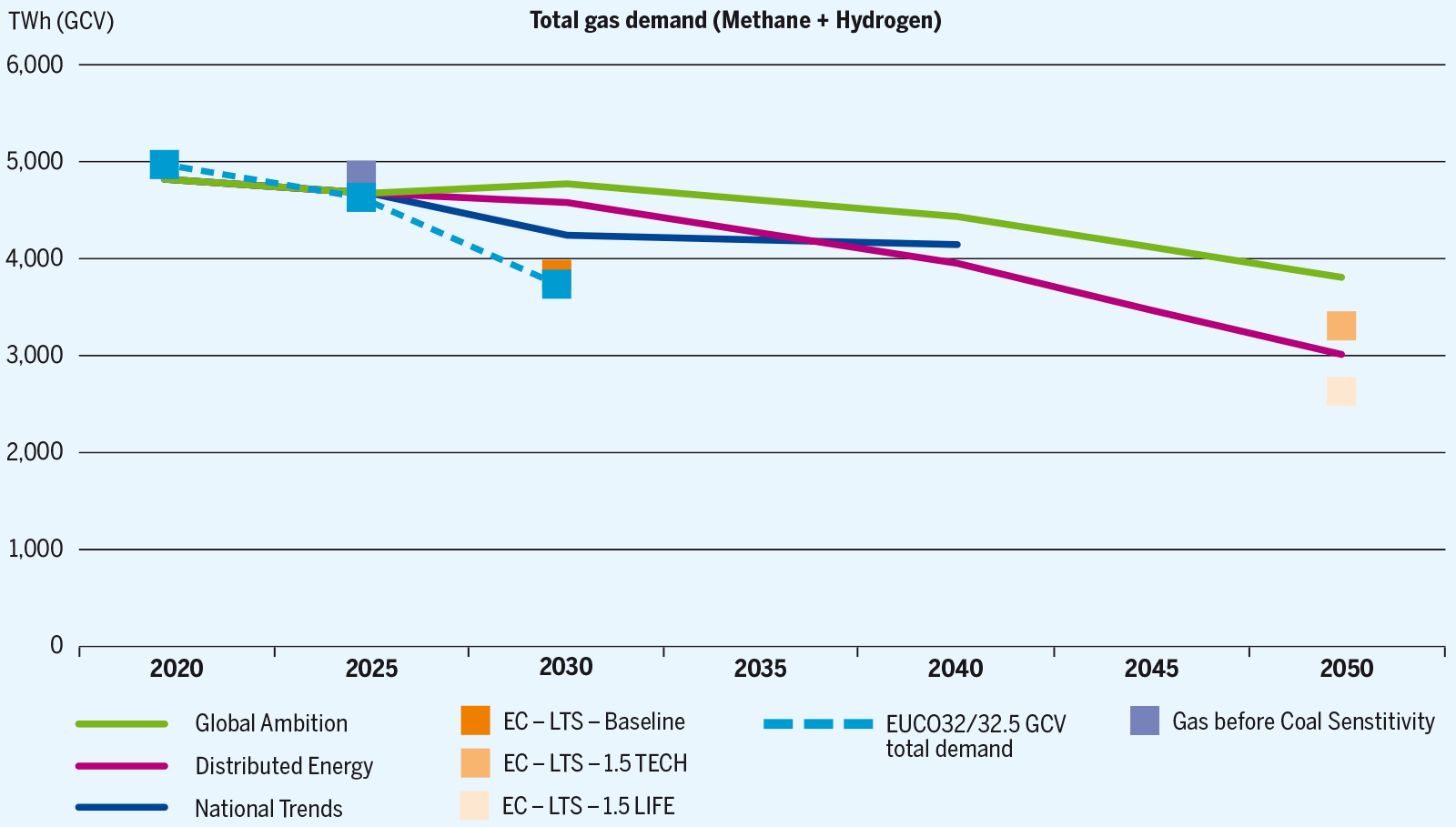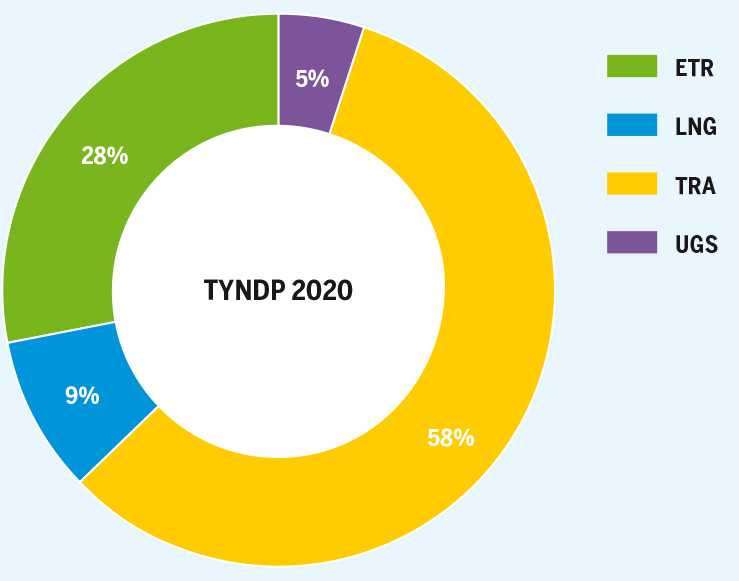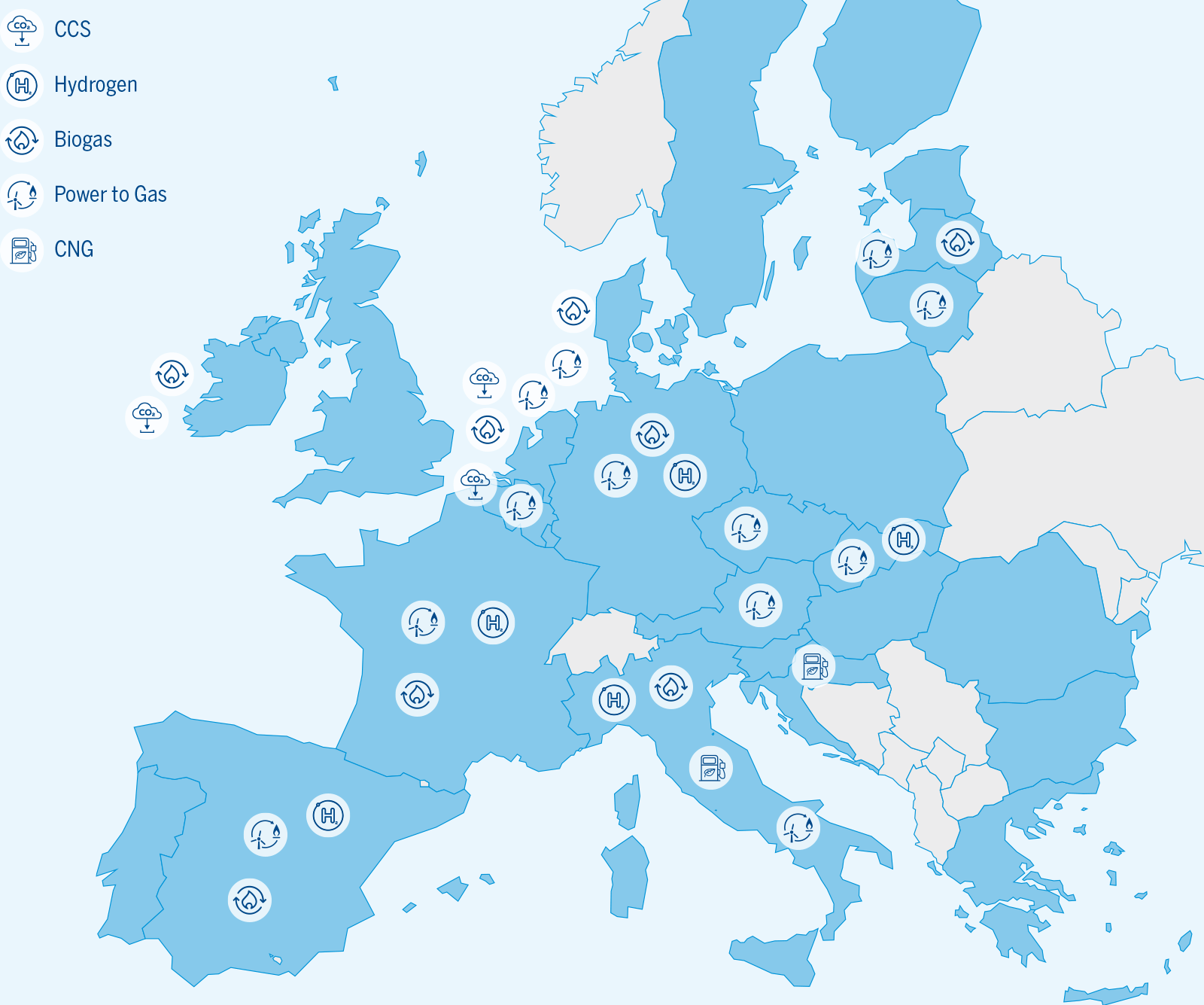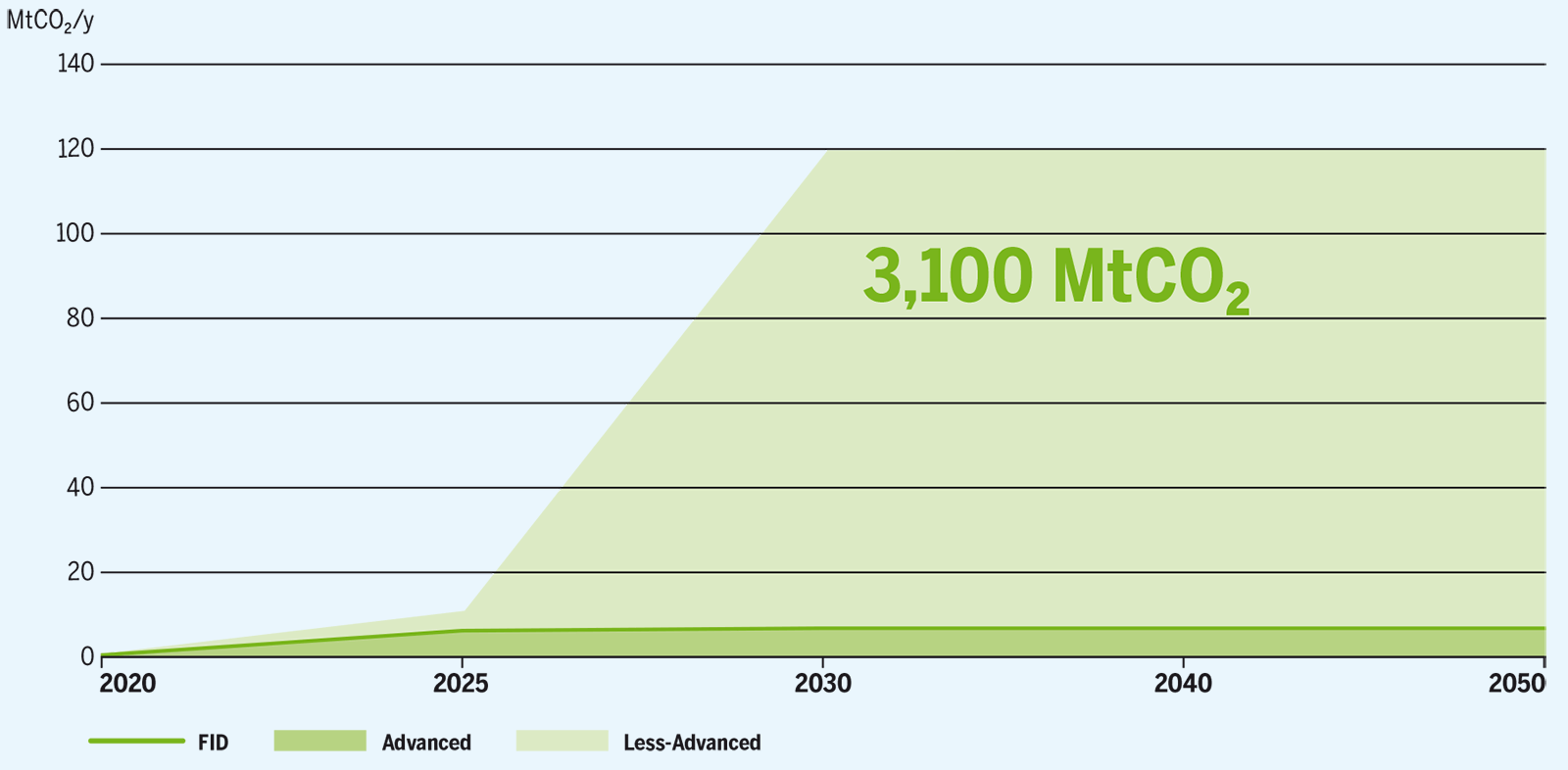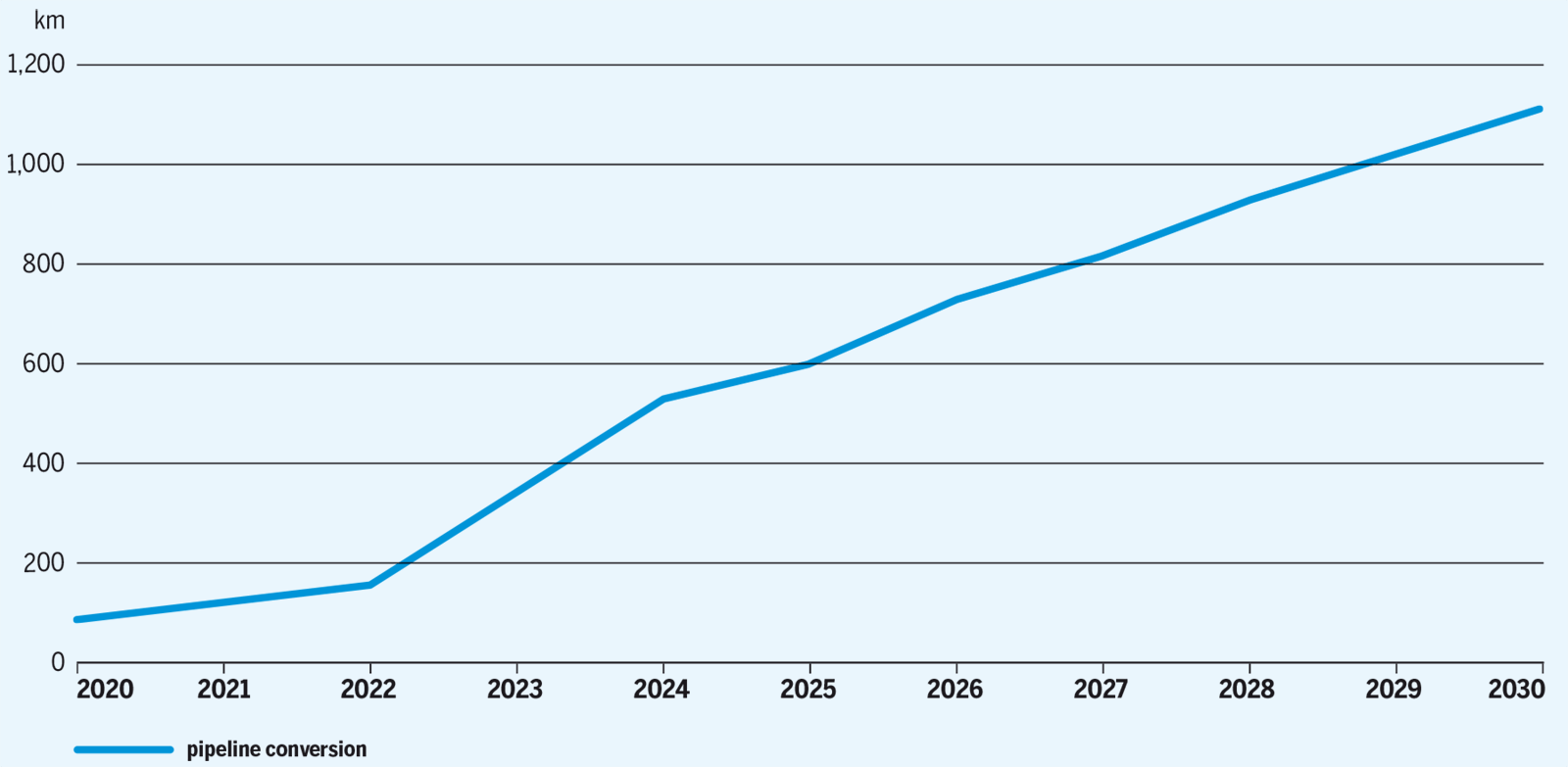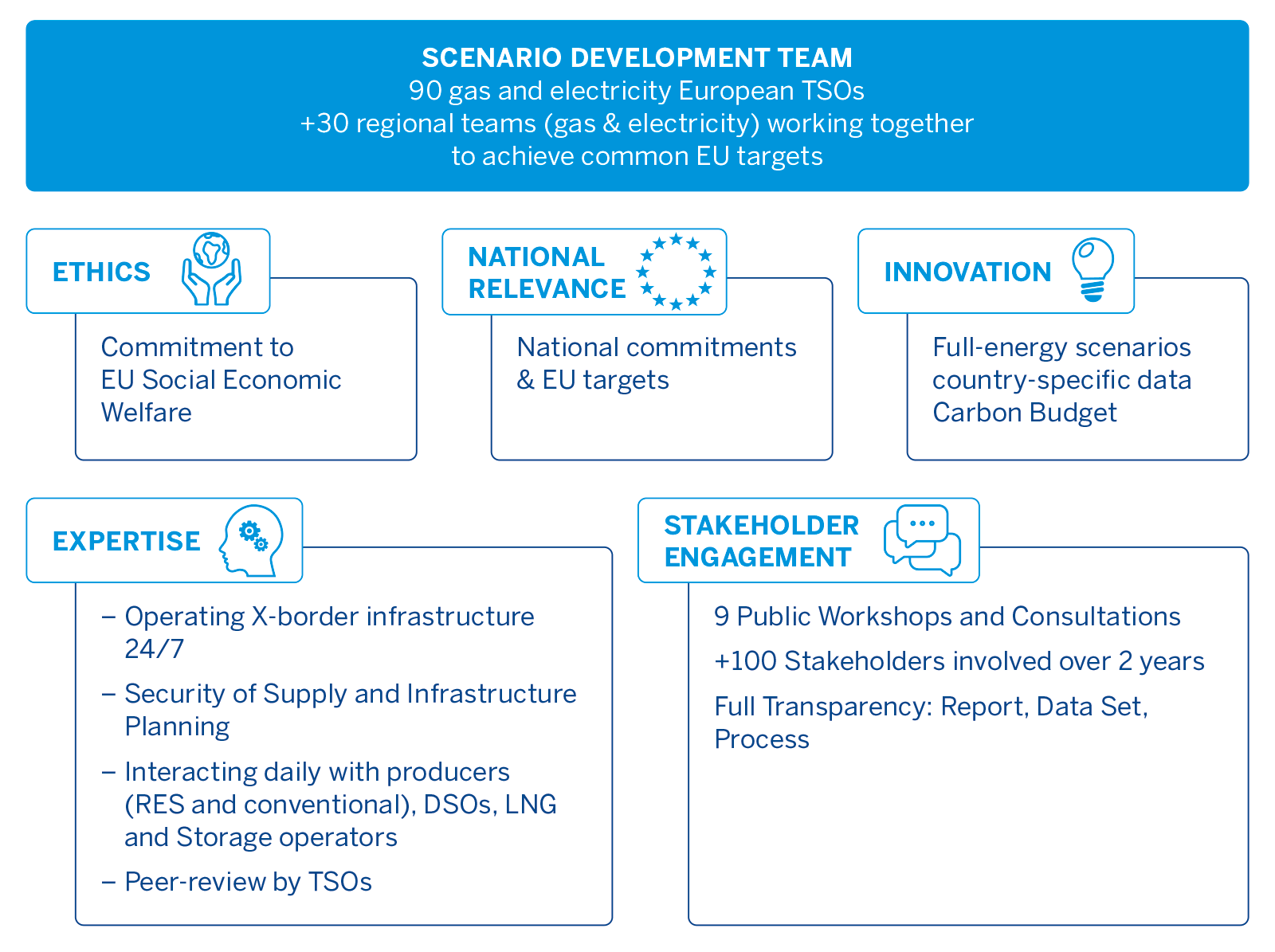1.1TYNDP 2020 scenarios: Net-Zero 2050 and COP 21 compliant
TYNDP 2020 scenarios support the European energy and climate ambitions
Scenarios are the corner stone of the joint gas and electricity interlinked model of ENTSOG and ENTSO-E. For the 2020 editions of their TYNDP, ENTSOG and ENTSO-E have developed sustainability-oriented scenarios reaching net-zero carbon emissions in 2050 and considering either national policies as defined by the Member States’ National Energy and Climate Plans (NECPs) or the objectives as defined in the Paris agreement (COP 21). Therefore, all scenarios comply with European and national ambitions and were largely supported by stakeholders during the definitions of the scenarios’ storylines.
Furthermore, building on the ever-improving interlinked model developed jointly by ENTSO-E and ENTSOG, the COP 21 scenarios – Distributed Energy and Global Ambition – are built on a holistic approach to the European energy system considering the total primary energy mix of Europe to ensure consistency across all sectors, beyond considering the sole interactions between gas and electricity.
1.2 The gas system is a key asset to reach net-zero 2050
Existing infrastructure can already support decarbonisation but development of clean gases is necessary
TYNDP 2020 scenarios show that reaching a net-zero economy by 2050 must result in energy efficiency improvements and a generally decreasing trend for the overall gas demand. The current infrastructure, backbone of the European gas market, already supports the displacement of more carbon intensive fuels (e. g. coal phase-out in heating, power and industry, or oil phase-out in the transport sector). However, as the European energy system goes more and more decarbonised, the gas demand is partly sustained by those energy intensive sectors, where the high energy density of gas and its mature and efficient storage and transmission capabilities are key assets.
Therefore, an adaptation of the energy infrastructure is necessary to develop significant production capacities of renewable and decarbonised gas, and to adapt the demand to new gases like hydrogen. Such projects are not covered by the current TEN-E regulation and are introduced for the first time by ENTSOG in TYNDP 2020 as part of the Energy Transition (ETR) category in addition to the project categories already covered by the regulation1.
1 As defined in Annex II.2 of Regulation (EU) 347/2013.
Gas is part of the solution towards net-zero 2050
TYNDP scenarios confirm the need for various renewable and decarbonisation technologies and the interdependence of the gas and electricity systems in reaching a net-zero European energy system by 2050.
Indeed, as the energy transition will create a change in the use of primary energies depending partly on the level of electrification and on whether it is produced locally or centralised, gas as an energy carrier has a necessary and key role to play and needs to be decarbonised.
Figure 3: GHG emissions in TYNDP 2020 scenarios
Figure 4: Total primary gas demand (incl. gas demand for power generation) – benchmark with EC Long-Term Strategy
ETR projects will drive the decarbonisation
To support Europe in its Climate and Energy ambitions, ENTSOG made the choice to collect and assess projects contributing to the decarbonisation of the gas system on a transparent and non-discriminatory basis.
For this first exercise, ENTSOG already collected a large number of projects. Submitted ETR projects reflect the wide variety of solutions needed to decarbonise the energy sector, from renewable generation to demand conversion including CO₂ storage and infrastructure conversion.
Based on the information collected2, ENTSOG has estimated that TYNDP 2020 ETR projects can contribute to more than 3,100 MtCO₂ savings per year. Since the ETR projects collection is not a regulatory requirement, they were submitted to ENTSOG on a voluntary basis. Therefore, the assessment is not comprehensive and the impact of the assessed ETR projects can be considered the very tip of the iceberg.
2 In some cases promoters were not able to provide the required technical information to assess their project contribution to CO₂ savings.
Energy Transition category already accounts for more than 25 % of TYNDP 2020 projects.
ETR projects evaluated in TYNDP 2020 could save more than 3,100 Mt CO₂ till 2050.
Figure 7: CO₂ savings generated by ETR projects in TYNDP 2020
More than 1,000 km of pipeline retrofitting submitted to TYNDP 2020 for the next 10 years
For the first ETR projects collection, around 1,100 km of pipeline retrofitting has been submitted to TYNDP 2020 and they concern France and Germany. According to some TSOs studies, the potential retrofitting activity could reach 6,800 km by 20303.
Quick wins are no regret options
The carbon budget approach considered in the COP 21 scenarios shows that the later the transition happens, the more you need to compensate for CO₂ emissions after reaching net-zero. Therefore, quick decisions made today can save a lot compensation measures after 2050.
With no further investments and no matter in which scenario, coal to gas switch can be implemented today and save more than 85 MtCO₂ per year (more than the annual CO₂ emissions of Austria), and other solutions already exist to quickly replace relatively higher carbon intensive fuels with gas in carbon intensive sectors such as industry and heating or in sectors where the energy needs to be stored and transported like mobility, including train, shipping and aviation.
The transmission infrastructure as a backbone to integrate clean gases and support an efficient energy market
As production capacities of clean gases need to scale up, renewable gases – like offshore power to gas – will be produced further from the consumption areas and will be unevenly distributed throughout Europe, depending where the best potential is located. The most recent ETR projects demonstrate that the existing gas infrastructure can already connect the production or import facilities to the consumption areas, and thus to the storages to cope efficiently and securely with the energy demand seasonality. ETR projects also include conversion projects when the integration of clean hydrogen requires an adaptation of the existing infrastructure.
1.3TYNDP: National expertise at the service of the European energy and climate ambitions
TYNDP 2020 relies on the expertise of the European gas and electricity Transmission System Operators (TSOs). TSOs are at the interface of upstream production operators, mid-stream LNG and storage operators, downstream consumers and distribution systems. They operate national networks and the largest cross-border energy infrastructure, backbone of the European Energy market and are essential to the cooperation between Member States to ensure the security of the energy supply of the EU.
Building on this unique expertise and the guidance received by the stakeholders, TYNDP 2020 scenarios are developed to comply with the European energy and climate ambitions and reflect contrasted usages of the infrastructure: centralised and decentralised.
An inclusive and transparent TYNDP
TYNDP 2020 is based on the joint ENTSOG and ENTSO-E Interlinked Model that combines national and technical expertise of more than 90 electricity and gas TSOs, as well as the participation of more of 100 stakeholders in numerous workshops. Therefore, TYNDP 2020 scenarios reflect the views of all the stakeholders who participated in the whole process from the definition of the storylines and the supply assumptions to the finalisation of the key parameters like electrification levels.
Continuing a tradition of high transparency, all methodologies, input data, technical data and results are available for download on ENTSOG website 4.
And to further clarify the neutrality of ENTSO-E and ENTSOG in the TYNDP processes, the associations will consider how to address this with a reinforced stakeholder involvement for the next edition.


